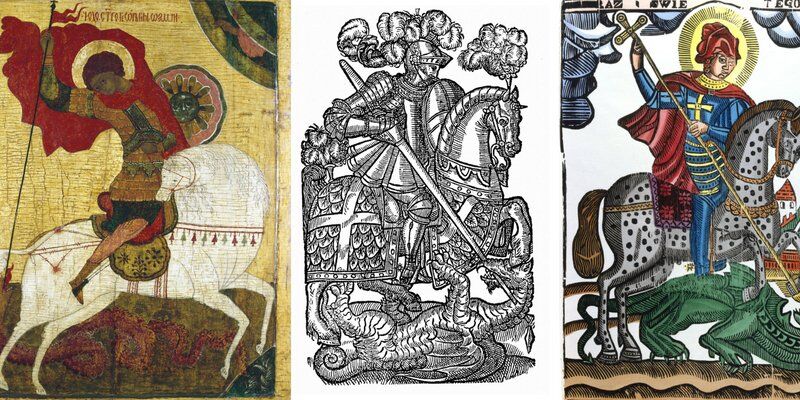St George’s Day and Its History
Ever wondered why we celebrate St George’s Day, or who he actually was? The name and legend of St George have endured for over 1700 years, and the mere mention of his name is synonymous with valour, gallantry and bravery. St. George is one of the most revered saints in Christianity, known for his legendary exploits.
It is hard to quote specific facts about St George’s life, owing to the passage of so many years. That said, there are some widely accepted stories from folklore concerning his life. Read on to discover more…
Where was he born?
It is said that he was born in A.D. 270, to Christian parents, in a part of the world now known as Eastern Turkey. After moving to Palestine with his mother, he became a Roman soldier, where he rose through the ranks.
In protest against his pagan leader, (the Emperor Diocletian), he resigned his military post. Despite subsequent imprisonment and torture, he remained true to his faith, rejecting Rome’s persecution of Christians.
Such fierce determination led to the Emperor’s further enragement, and he punished St George by having him dragged through the streets of Nicomedia. He was then beheaded. This was on April 23rd A.D. 303, when St George would have been the age 33.
Such brutal treatment, coupled with St George’s unwavering loyalty and faith, led the Emperor’s wife to become a Christian. She too was executed for her faith.
When did he become patron saint?
Although the Council of Oxford declared April 23rd to be St George’s Day in 1222, it was not until more than a hundred years later, in 1348, that he became the patron saint of England, replacing St. Edmund the Martyr. However, It is unlikely that St. George ever actually visited England.
Through history, the story of St George and the dragon is one that has endured. In the middle ages, dragons were commonly in use as metaphors for the devil. Legend has it that villagers from the Libyan town of Silene had run out of sheep to offer as sacrifice to the dragon that guarded their water supply.
The King’s own daughter was on offer instead, whereupon St George dismounted his white stallion and drew his sword, protecting himself with the sign of the cross. He slayed the beast and saved the princess, resulting in the people of Silene abandoning their pagan beliefs and converting to Christianity.
English Flag
St George is known by his emblem of a red cross on a white background, and is part of the British flag. The emblem was adopted by Richard the Lion Heart and the King’s soldiers wore it on their tunics.
Despite the fact that he is the patron saint of England, few people, when questioned, know the actual Saint’s day. It is more likely that you will see Ireland’s St Patrick’s Day being celebrated in England!
That said, there are many who believe that April 23rd should be a national holiday. What do you think?
Some Interesting Facts About St George
- Patron Saint: He is the patron saint of several countries and cities worldwide, including England, Georgia, Portugal, and various regions in Spain.
- Iconography: St. George is often depicted as a knight on horseback, clad in armour, wielding a lance to defeat the dragon. This imagery has become iconic in Christian art and culture.
- Global Recognition: St. George’s Day, celebrated on April 23rd, is recognised not only in England but also in many other countries where he is revered.
- Military Patron: St. George is also the patron saint of soldiers, knights, and cavalry. His association with chivalry and bravery makes him a fitting figure for those in military service.
- Cultural Influence: His legend has inspired numerous works of literature, art, and music throughout history, including the famous story of “Saint George and the Dragon” by Edmund Spenser.
- Cross-Cultural Veneration: Beyond Christianity, St. George is respected in Islam as well. He is known as Al-Khidr in Islamic tradition and is revered as a prophet and a symbol of courage and righteousness.
- Dragon Symbolism: The tale of St. George slaying the dragon is often interpreted allegorically, representing the triumph of good over evil or the Christian victory over paganism.
- Legacy in Heraldry: The dragon-slaying image is a common motif in heraldry, appearing on numerous coats of arms, flags, and emblems around the world, symbolizing bravery and valour. To view our dictionary of heraldry symbols and what they mean, click here.
Find out if we have the coat of arms and surname history for you surname by clicking here.




The English are a modest race who don’t boast of their formers victories or openly shout about their patriotism like some countries do but rest assured their patriotism is simmering in the background ready to spring forward whenever needed as has been witnessed many times in our history.